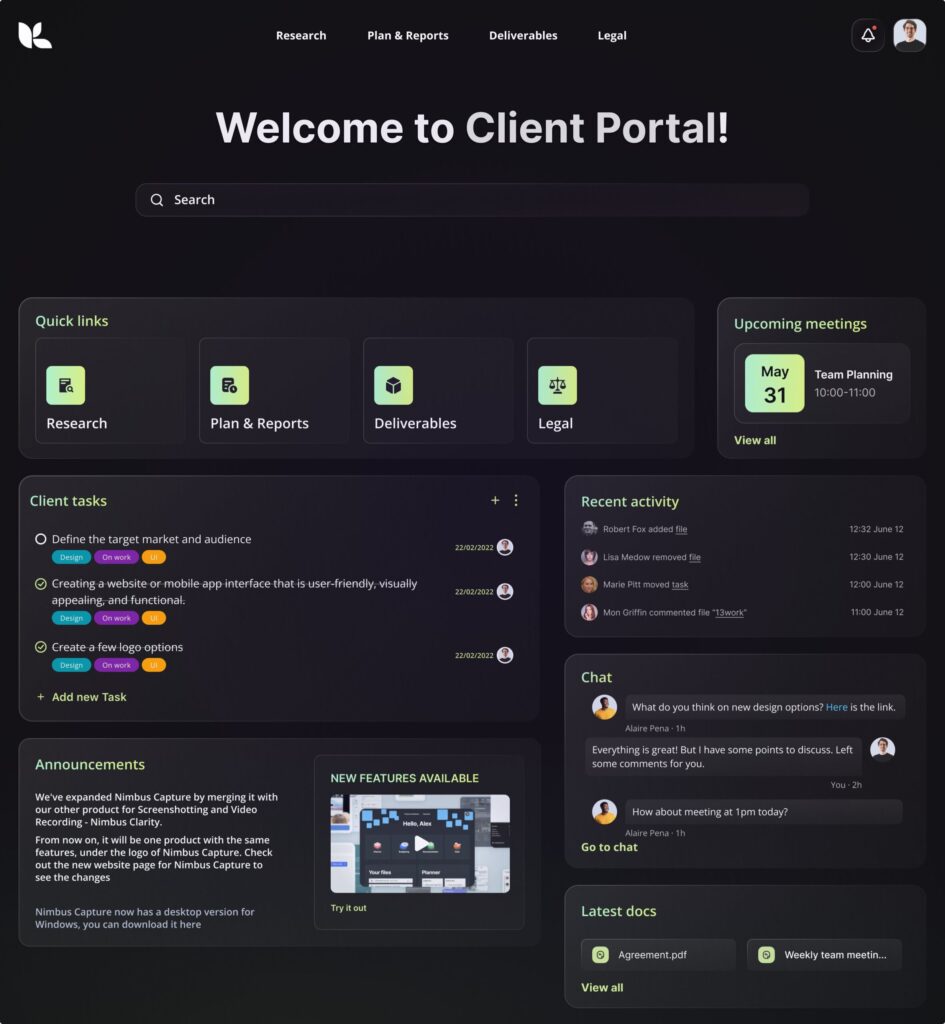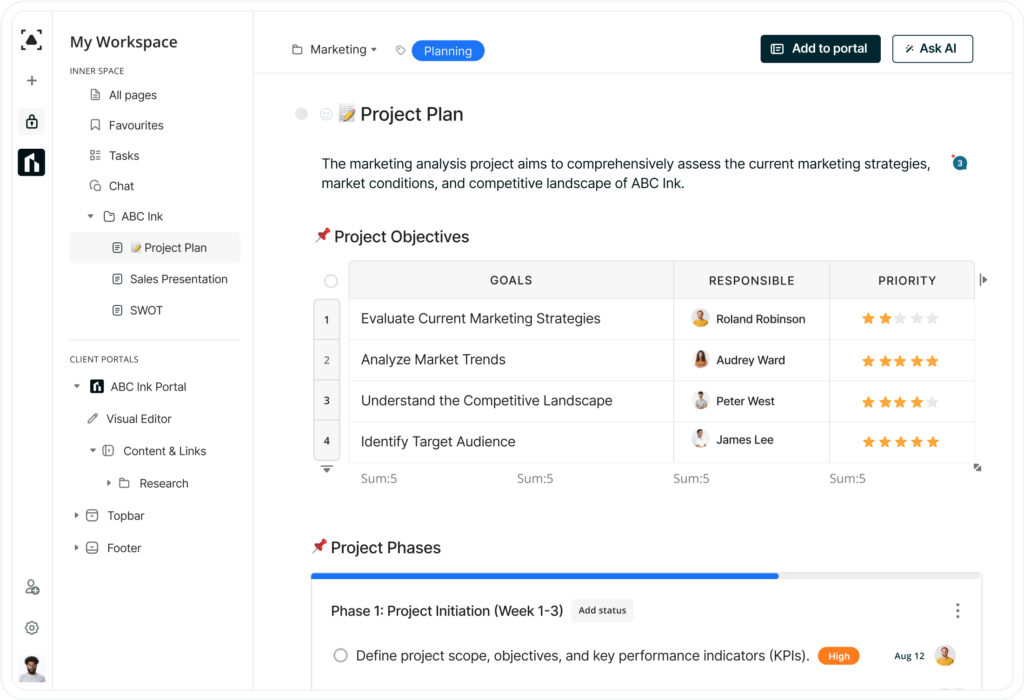
What is a Corporate Intranet, and Why do Businesses Need it?
- October 11, 2022
- 10 Min read
Technology plays a pivotal role in enabling businesses’ success. This proved to be especially true in recent challenging years. Microsoft SMB Voice and Attitudes to Technology Study 2022 confirms that the early adopters of digital technology saw higher revenue growth and more progress towards their business objectives.
With the Covid-19 pandemic issues and working-from-home trends, the need for effective collaboration and intranet solutions is picking up steam.
Having appeared at the end of the last century and been around for over 30 years, the intranet may seem a somewhat obsolete and outdated concept. However, currently lots of companies are actively reviving their internal communications and employee engagement networks to meet the challenges of the rapidly changing world.
That is not to mention that intranets have significantly shifted from the static homepages of previous decades and now comprise modern and feature-rich internal communication solutions.
What is an Intranet?
An intranet is usually defined as a private communication network based on web technology and used exclusively within a certain enterprise or organization. Hosted either in the cloud or on-premises, intranets serve as storehouses for internal company information: HR policies, news, calendars of holidays and onboarding documents., which can be accessed by any employee at any time.
The prefix intra stands for ‘within’ or ‘inside’ and carries the sense of ‘within one group of people.’
What is the Use of Intranet?
The intranet is predominantly used by staff for information searching and sharing, communicating across an organization, coaching new employees, and managing internal documentation.
With the distributed teams and teams working remotely, businesses should adopt a new way of thinking about how things need to be done—the one that focuses on collaboration. And that is where the intranet being an excellent vehicle for managing their communications and boosting their engagement and productivity hits the stage.
All in all, if we need to derive a formula for intranet, it would look like communication + collaboration.
Internet vs. Intranet: Key Differences
The internet is a worldwide system of computer networks that use the Internet protocol suite (TCP/IP) to exchange data with each other. This allows us to surf the net, use various internet services like email, share content, communicate with each other via instant messengers from opposite sides of the world and much, much more. The internet in its current form has been around for a bit more than 30 years, though it has been created much earlier. Its impact on our society has been so decisive that scientists even define the time we are living in as the Internet (or Information) Age. According to the Statista portal, as of April 2022, there were five billion internet users worldwide, which is 63 percent of the global population, and that number is constantly growing.
Let’s take a closer look at the intranet vs internet question. Historically, the internet has derived from the intranet. Not surprisingly, the two resemble each other in some respects and at the same time have intrinsic differences. When speaking of the similarities between the internet and intranet, the first thing to mention is that both use TCP/IP technologies to exchange information across a network. In fact, the intranet can be treated as part of the internet. Both use similar security features for data protection such as firewalls, encryption and decryption techniques, etc. The principal difference between the intranet and the internet is that the former is a closed, private network, while the latter is open and public. Access to the intranet is usually granted via company credentials or a private network. Whereas in contrast, practically anyone can connect to the internet. To put it short, the internet is meant for everyone, while the intranet is for a selected group only.
What is an Extranet, and How is it Different from an Intranet?
Before discussing the differences between the two, let us first look at what the extranet is. The extranet is usually defined as a controlled private network that uses internet protocols and public telecommunication systems and is available both to internal users and trusted third parties. Its primary purpose is to ensure secure communication between a company and its business partners.
The obvious benefits of the extranet include increased efficiency, enhanced communication, and simplified interaction between all the stakeholders.
For instance, a web design company may build an extranet to give their clients instant access to current projects which will allow decreasing the time spent on reviewing, discussing the required alterations, and getting approvals.
Both the intranet and extranet are private networks accessible only to authorized users. Both have similar goals: facilitate communication and enhance collaboration. However, while the intranet is owned by a single organization, the extranet can have more than one owner. Another distinctive characteristic of the two is that the former is secured by a firewall whereas the latter is secured by a firewall and VPN.
What are the Advantages of Using an Intranet?
Establishing an effective internal intranet creates strong and transparent corporate culture, helps streamline employee workflow management, simplifies employee onboarding, encourages knowledge sharing, improves employee initiatives and increases overall employee engagement. Intranet, acting as a communication hub for staff, allows achieving all this at a relatively low cost.
Perhaps the most valuable benefit the company intranet brings is facilitating collaboration and thus bringing employees together. The importance of effective collaboration is difficult to overestimate: it is a key to success and a cornerstone of development in the transforming world.
What are the Disadvantages of an Intranet?
When speaking about the minuses of intranet communications, the first thing that comes to mind is their vulnerability to security risks. Since a company intranet often contains sensitive, business-critical information, it can easily become a target for hackers and cyber attacks. Being a closed, private network, it still requires essential security measures.
The implementation of an intranet is yet another drawback to consider. Building an effective internal network is resource-intensive and time-consuming, not to mention the need for regular updates and maintenance of the system by operational readiness.
Unlikely as it may seem, the company intranet needs to be managed throughout. It is highly important to monitor user roles and accesses, maintain the visual design and site navigation, as well as develop and promote content.
How does the Intranet Work?
There are three types of intranets: on-premises, cloud-based, and a combination of the two, known as hybrid. In the first case, the intranet is entirely hosted on the company server and is managed by the company staff. However, due to the complexity and high costs of maintenance, more and more businesses are moving away from this model.
Whatever type of intranet you are using, to access it, you need to be connected to the company LAN (local area network) which consists of computers uniquely identified by the MAC or IP address. Remote employees connect to the intranet through a virtual private network (VPN) or another secure connection. To monitor and control incoming and outgoing network traffic, a firewall is used. It stands as a gateway between the internet and intranet securing the latter by preventing malicious activity, blocking unsolicited network traffic and restricting unauthorized access.
Intranet Best Practices
Security. Intranet security should be one of the primary concerns for an organization as internal data must be safely protected from corruption, theft or unauthorized access. Note that cloud-based intranets have a reputation for safety and are less likely to be breached. Therefore this can prove to be a wise investment.
Mobile-friendliness. The possibility for employees to connect to the company intranet from their mobile devices at any time and no matter their location allows for saving time delays especially when the teams are working in different time zones. Thus mobile-friendliness is an important feature to consider when building an intranet.
Embedded integration capabilities. The ability to build seamless custom integrations with the company toolset is a crucial intranet feature. It should unite all the essential workflow tools and platforms employees use every day like Google Workspace, Microsoft 365 suite, Slack, Jabber, Webex, HR apps, Zoom, GitHub, Salesforce and Okta into a single working environment.
User-friendliness. Providing staff with a good digital experience contributes to higher job satisfaction levels and forms an overall positive attitude towards a job and employer. User-friendliness encompasses a bunch of vital components: a simplified yet well-designed user interface, intuitive layout, high usability, creative and meaningful content and easy navigation. A positive digital experience makes employees want to use the intranet to interact and share knowledge more.
Personalization and customization. Modern intranet software allows for high-level personalization and customization making it possible to shape the intranet structure and content according to the specific needs of different companies. In the case of remote and hybrid teams, a personalized intranet can essentially become a critical hub for corporate communications, collaboration and cooperation.

If you are seeking a digital workplace that is highly adaptable, FuseBase is the solution. This platform facilitates seamless communication between teams and clients with its comprehensive features and tools. You can achieve efficient task and document management from a single tab or expand your workspace to the Client Portal for collaboration with your clients.
Discover new ways to develop your teamwork with FuseBase
Up-to-date features. The most common complaints about outmoded intranets include stale content, poor user experience and old-fashioned design. Social media features, catchy design and a smooth user experience are crucial features for any intranet today.
Hybrid workplace. The future of the workplace is somewhat vague. With the success of remote work, an increasing number of organizations are developing hybrid workplaces to let their employees benefit from working in a way that suits them better. Therefore intranet optimization for remote work is essential.
5 Tips to Build a Successful Intranet
The technical implementation of a new intranet platform is often done quickly, especially nowadays when the market is saturated with custom solutions and cloud services. But that alone is not enough when creating a modern intranet from scratch. You need to develop and adopt a plan.
Prepare the launch carefully

This is an important step and should be thoroughly planned. It includes searching for an intranet software vendor, assessing your company’s strategic needs and requirements, identifying company goals and defining main target groups and key stakeholders. Don’t rush at this stage because creating a solid strategy is an essential part of laying the foundation for success.
Give your users a voice
Employees are at the heart of any intranet project, so it’s vital to seek out their input and feedback during the design and build-out. Remember that no matter how sophisticated the software is, it is your staff who fuel intranet magic.
Make your company intranet easy and fun to use
Think of injecting an element of fun by adding a couple of features that the staff will enjoy using, for example, internal web pages, personal boards, or even games—and that would undoubtedly be a boon to employee morale.
Keep security in mind
Data security is non-negotiable. Investing in technology teams as well as in firewalls, proxy servers, virus scanners and network monitoring tools can help prevent security issues.
Stay agile
Despite all the planning and preparation, be ready in case something does not go as intended. You can mitigate the risks by being flexible, hiring the right people and allowing them to experiment.
The concept of the intranet is nothing new, but it has recently gone through a revolution. As the trend of digital perseverance is on the rise, lots of organizations, both established ones and earlier-stage enterprises, are trying to embrace the benefits of intranets by either building their own systems or adopting custom ones. Off-the-shelf collaboration platforms are easier and faster to implement, are completely customizable and can breathe new life into your employee experience and help address the three Es of employee centricity: engagement, enablement and empowerment. The intranet today is the key differentiator for the future of the workplace.
Join FuseBase on LinkedIn for our latest articles and updates
Found it useful? Share the article with your community
Subscribe to our blog!
Get weekly tips and insights on how to grow your business